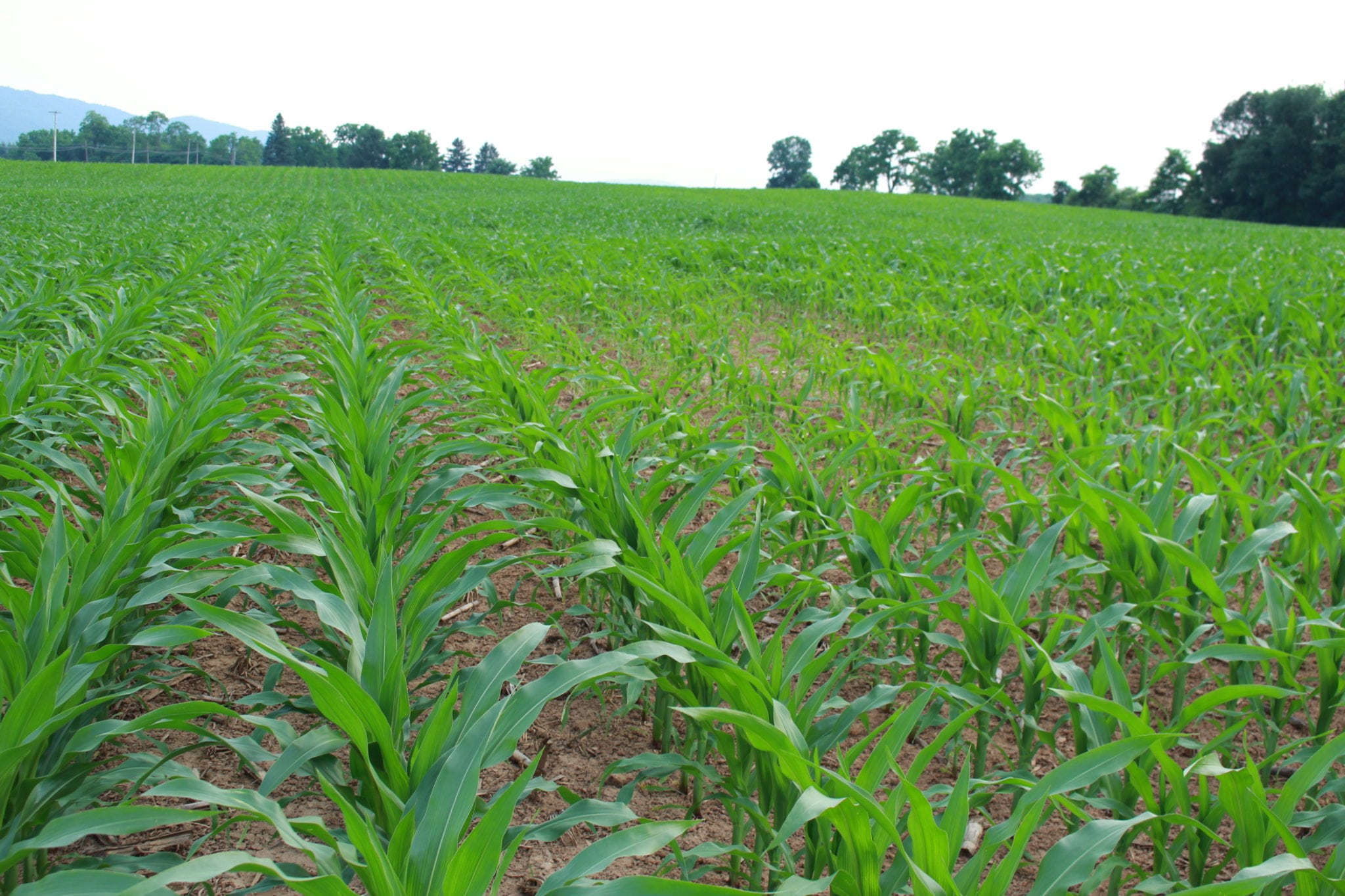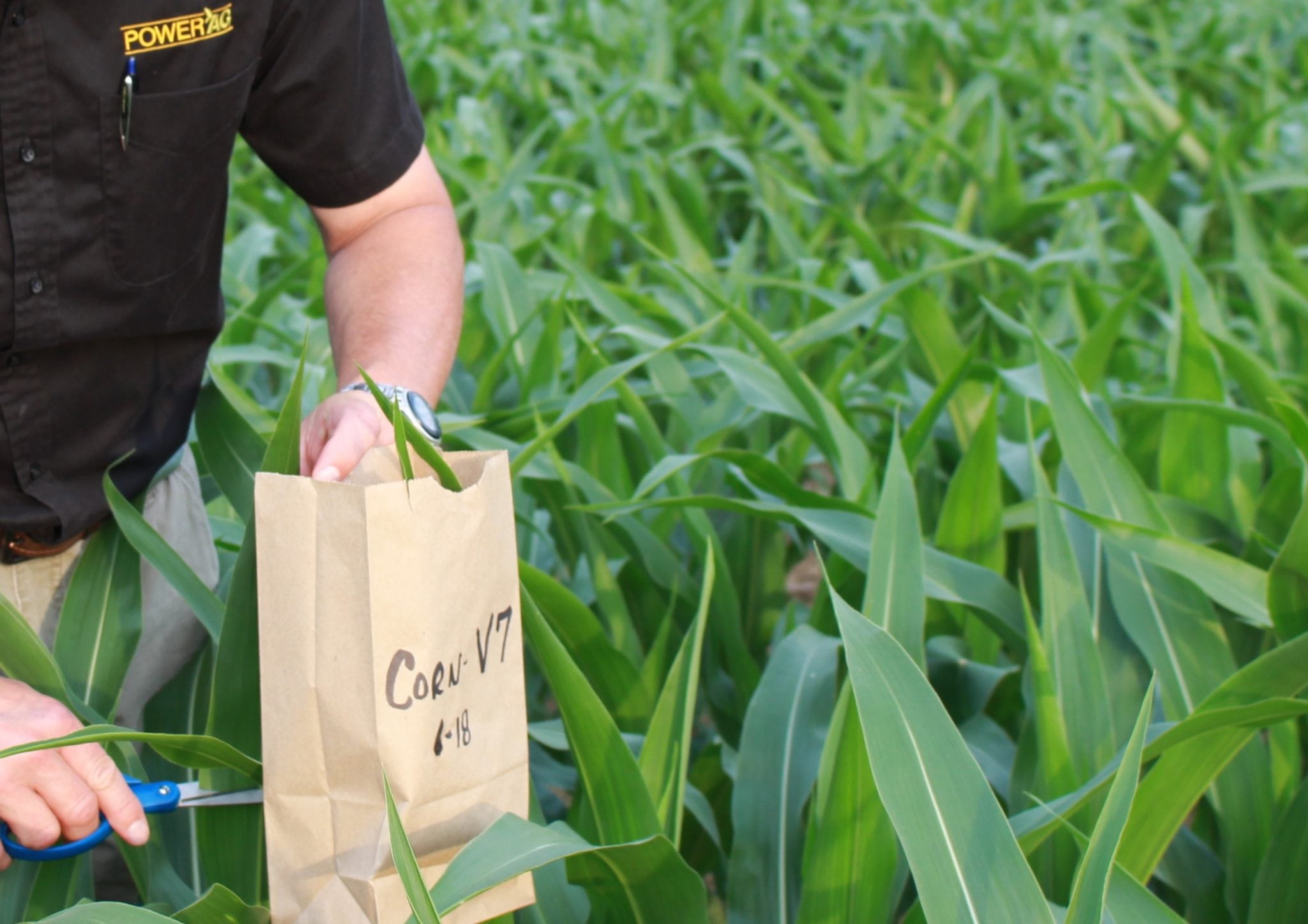Menu
How Much Nitrogen is Left?
After a cool, rainy spring we enter the summer months wondering how the fertility plan we started with is holding up to the demands of the crop for this growing season. Just how much Nitrogen has been lost?
The amount of Nitrogen loss depends on multiple factors including rainfall amounts, soil temperatures, use of an N stabilizer and the source of Nitrogen applied. Denitrification is a primary concern because Nitrogen losses are most significant when the N is converted to the nitrate form. Beneficial soil bacteria are at work converting the Nitrogen into a nitrate form which is readily available to the plant. However in the nitrate gas form, soils that are saturated with water will leach away significant portions of the available N, as is easily observed in poorly drained soils, compared to the well drained areas.

Not every heavy rainfall event sweeps away large portions of nitrate. If the soil is well drained, denitrification is less significant. Excessive water levels can drain away up to 3-5% of the nitrate for each day of soil saturation.
However, we must remember there are other factors to consider. Remember, the Nitrogen losses are most significant when in the nitrate form. Different forms of applied Nitrogen convert to nitrate at different rates, over a period of time. For example…
Urea – by 3 weeks after application has converted 50% to nitrate, and by 6 weeks is at 80%.
UAN – by week 1 is at 25%, by week 3 is at 60% and by week 6 is 80% unless a Nitrogen stabilizer is added.
So, let’s do a little math to illustrate the process described above.
Let’s say I applied 200 units of Nitrogen in the UAN form without a Nitrogen stabilizer, and 3 weeks after application, we have a steady, heavy rain of 5-7″ which keeps the soil saturated for 7+ days. 200 units of N X 60% in nitrate form = 120 units of N nitrate. Let’s suppose it takes 2 days for the saturation process to occur, and then we lose 4% (3-5%) for the next 5 days of saturation, for a total of 24 lbs of Nitrogen.
200 N X 60% = 120 N X 4% Nitrate loss X 5d = 24 lbs lost N
Now the question is, the corn is V7, should I go in and side-dress more N or just let it go? That question is answered differently based on yield goals, stand establishment and high yield objectives. Do you have a good, uniform stand to support high yields? What is your yield target? How can you best maximize your ROI? Remember, 24 units of N can support 25-30 bushels of yield.
You can also test for Nitrogen levels by tissue testing or pulling soil samples. If your soil test shows you have 25 ppm N or more, you likely have adequate Nitrogen available to finish the crop.
Also remember all the other nutrients. Is your corn crop set up to build big yields, or should it be supported with products like HarvestPower MP or NitroSR? The choice is yours.

It’s important to monitor the overall nutrient status of the plant. It’s a little like pulling the dipstick to check the oil or glancing at the fuel gauge before heading to the field. Following up on nutrient availability at this stage of growth, can re-assure you that your crop will develop properly during critical stages of growth, and help you maximize yield.
At PowerAG, we stand ready to help you with additional information and products to support your fertility decisions. Finish Strong!

 Currently Rated 4.67 out of 5)
Currently Rated 4.67 out of 5)
